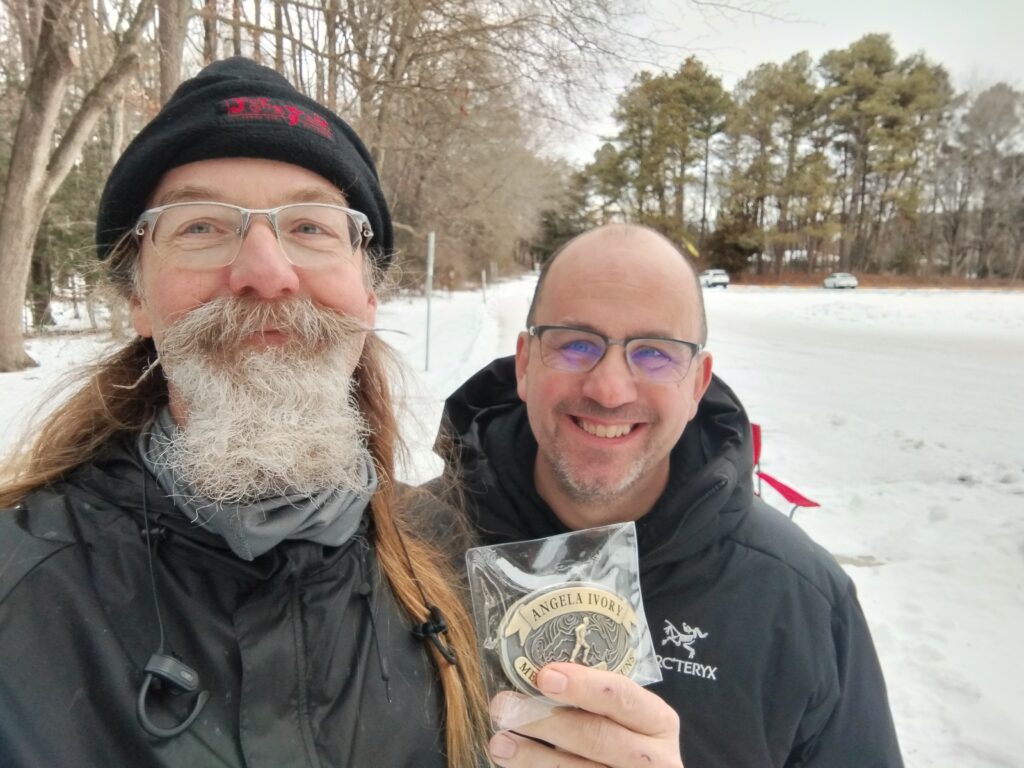No Name Calling, Please
The Angela Ivory Memorial Runs are organized as fatass style ultra events at Killens Pond State Park in Felton, DE. I would characterize this as a “no frills” race, but that still doesn’t quite convey the lack of amenities. You get what you bring. If you didn’t bring it, it’s not going to be there. That’s not completely true as there’s a community table where people contributed some items along with several gallons of water. But you shouldn’t expect anything.
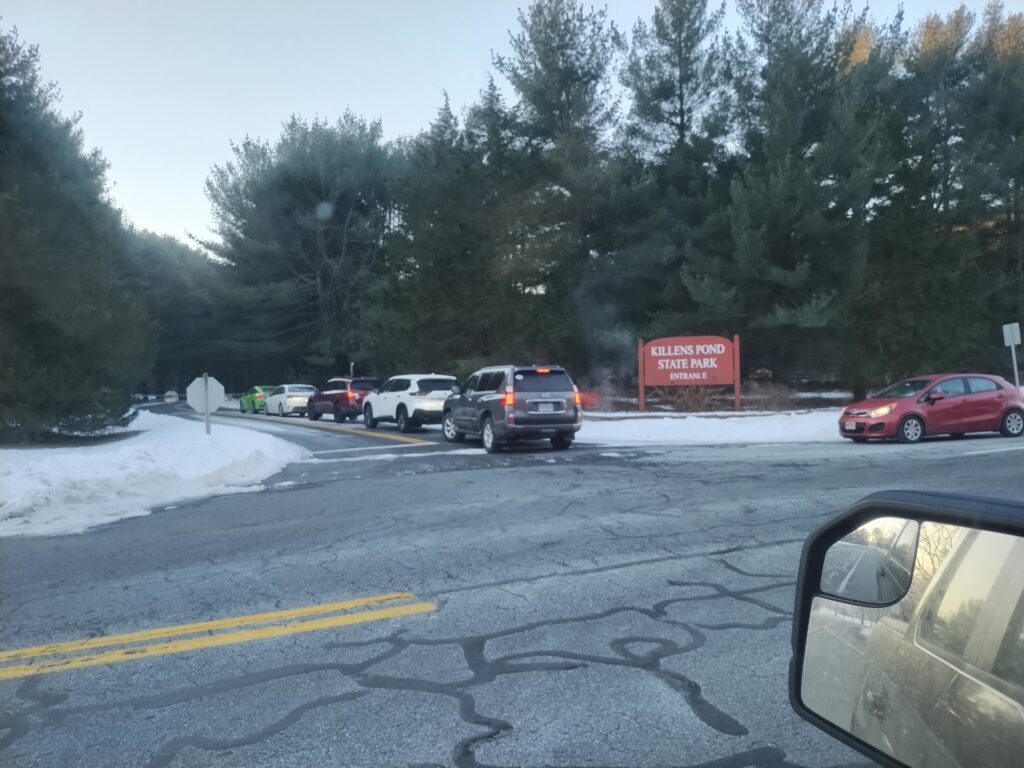
Well, nothing tangible anyways. The course was well marked and the RD (Jon) was incredibly engaging throughout the entire event. You saw him at the end of each lap with a clipboard where he kept track of runner’s laps. Well, at least for the 24 hour/100 mile runners. Those doing the 50K were left to their own devices (literally) to determine when they’ve reached 10 laps.
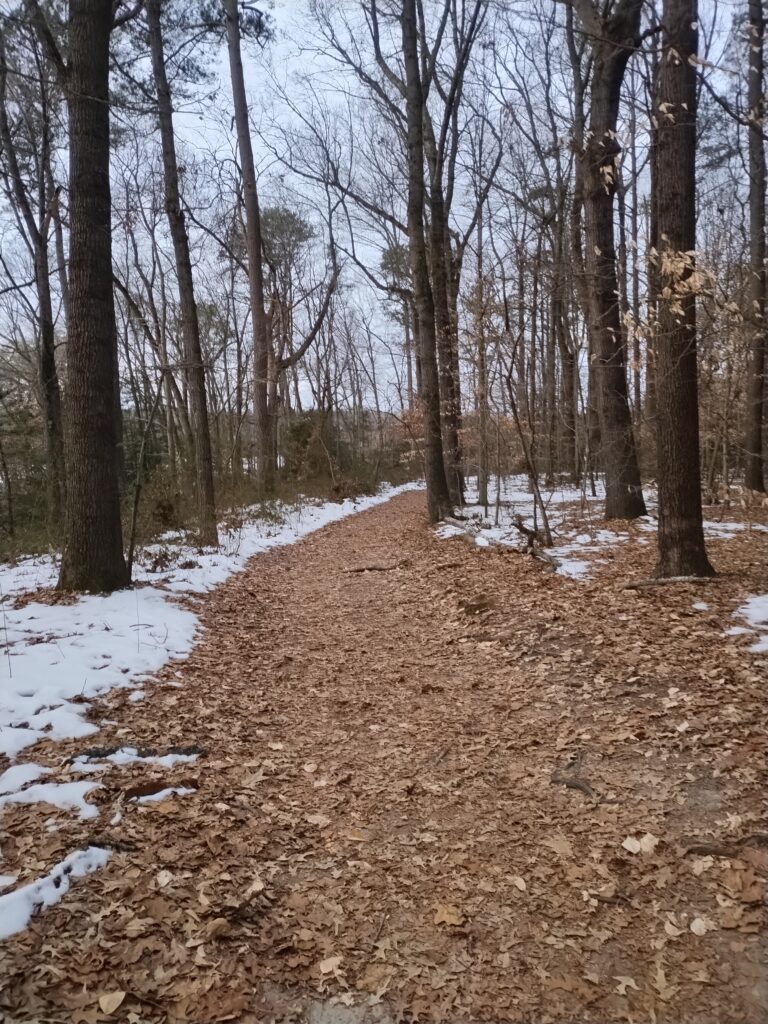
Advice For The Inexperienced
On paper, this looks like an easy course: 3.1 mile loops on mildly rolling terrain (30 ft/mile elevation gain). In reality, the weather and looped format make this at best an average difficulty race and likely a bit harder than most.
Weather’s going to be an X factor in any race. Cold temperatures are difficult to deal with because your body loses it’s ability to regulate itself the longer you’re out running. This means you’ll feel colder at a given temperature than you’re used to. Being too cold can quickly lead you down a mental spiral where you start thinking about safety (i.e. no one wants to lose a digit to frostbite), which can quickly lead to a rationalized DNF.

The short loop format makes logistics easy. You don’t need to worry about what you’ll need and when you’ll need it. And you don’t have to worry about whittling down what you may need to fit into shoe box sized drop bag. You can literally load up the trunk of your car for every eventuality. The problem comes from what I call the convenience of quitting. The easier it is to drop from a race, the more likely you are to do so. And the more opportunities you have to drop from a race, the more likely you are to do so. This race provides you 31 chances to drop in the hundred mile race. 31 times you have to say good-bye to your crew. 31 times you have to leave your warm car and head back out onto the cold, cold trail. Just to come back to where you are currently standing. At some point (likely many of them), this will seem like the dumbest thing you’ve ever thought up and you’re going to want to stop. John has offered in the past to take runner’s car keys to help them out with this, but no one has taken him up yet. My suggestion – let him help you.
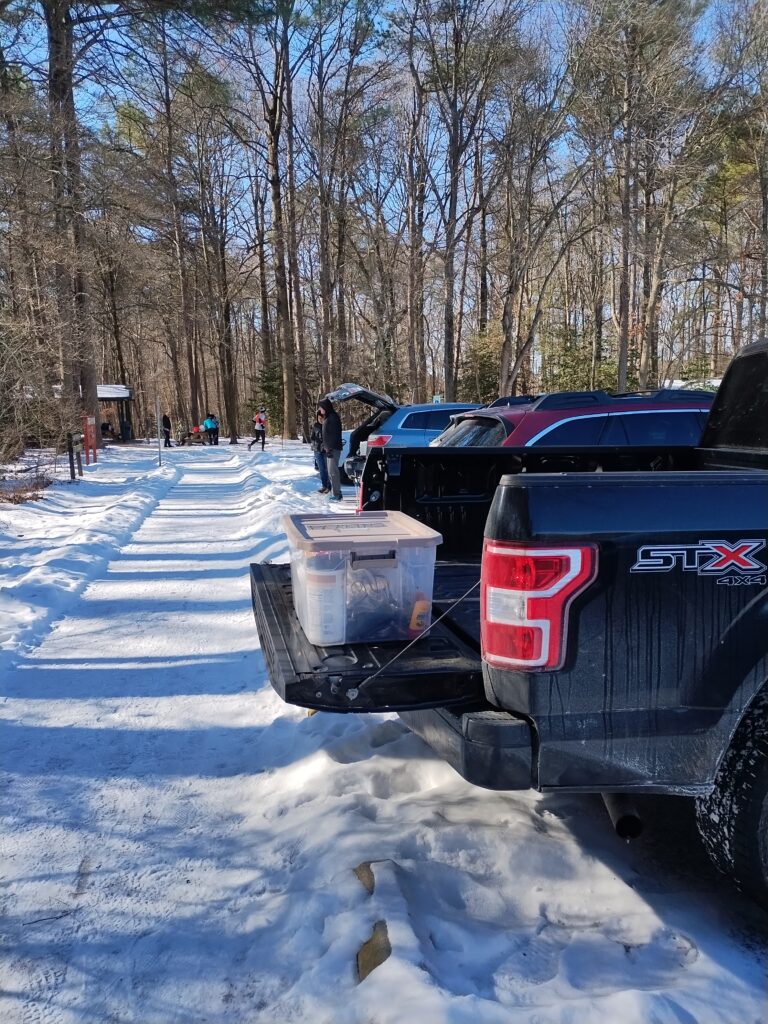
Advice For Running An Even Paced Race
It’s taken me a very long time, but I’m finally starting to figure out how to run hundreds. My goal was to run even splits and come in just under 24 hours. Given the course profile, I thought I could run maybe 21 hours on a good day. In reality, the course was a little more challenging than I thought (3,800 feet elevation gain/loss) and my watch measure it a little long (102.8 miles). There was also a decent amount of packed snow and ice on the trails, which probably added an hour to finish times. So overall, my target was modestly slower than my capabilities. Why run slower than I’m able? Because enjoyment of the race experience is as important as clocking a good time. Also, I’ve recently had a thing about running an even paced 100 miler so I’d like to cross that off my list of ultra accomplishments.
The math on finishing 100 miles in 24 hours comes out to a pace of 14 minutes, 24 seconds per mile. I was afraid the course might measure a little long according to my watch so started out at a 14 minute flat pace. The first couple loops were indeed measuring long so I bumped that down to 13:54 to give myself a little more buffer. This doesn’t mean every single mile was clocked at this pace. Some miles were a little easier, although if I saw my average time creeping down then I’d add in some extra walking to get back up to 13:54. As a point of reference, I could probably knock out a 20 mile run on this course at a 9.5-10 minute pace so I was starting out 40% slower than long run pace.
I was maybe 6 loops in when I noticed I was having to push a little harder to maintain pace. Considering there were still 26 loops left, this was waaaaaay to early for this to happen. While I mentioned some negatives about the short loop format above, the biggest benefit is you can quickly pivot when things start to slide sideways on you. I had been changing my nutrition of fluids every 3 laps (Perpetuem, Coke, OJ) and solids every 2 laps (gummy bears, chips, trail mix, Snickers, Mike & Ikes, Slim Jims). I immediately switched to changing both solids and liquids each lap and I was back in business.
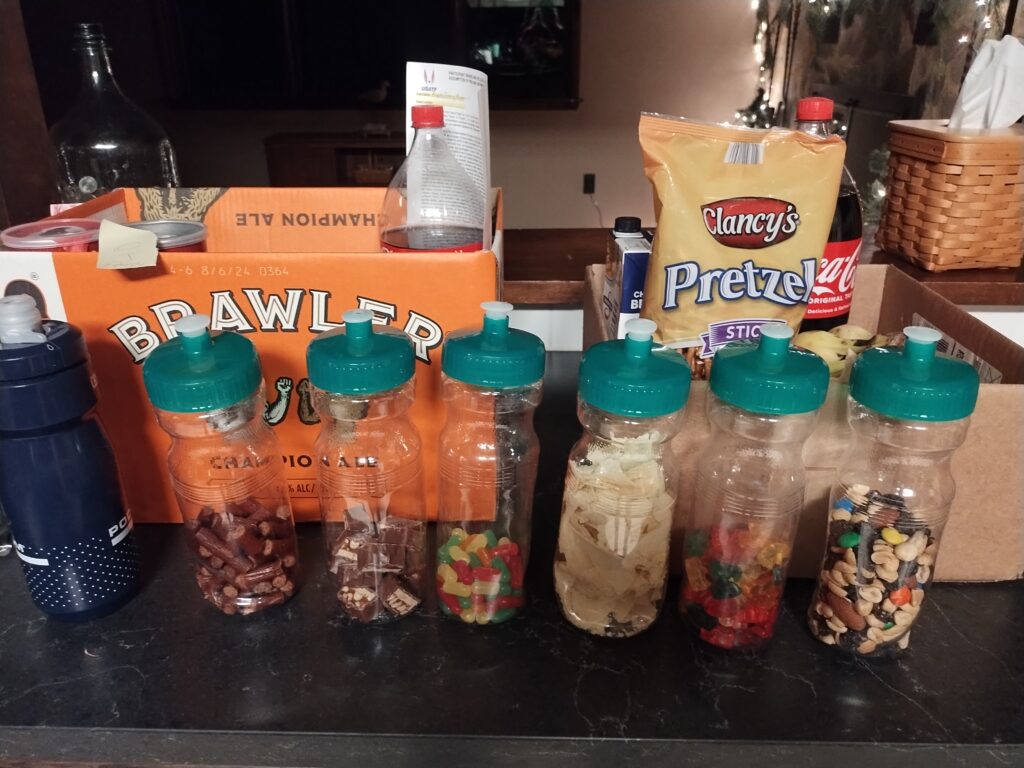
I hit the quarter pole mark of 8 loops a smidgeon under my target at a 13:52 pace or 5 hours, 54 minutes. John mentioned that there was going to be a surprise bonus of 0.8 miles after 32 loops (surprise because he hadn’t figured out what that would be yet). Keeping this pace would let me bank 24 minutes (6×4), which should give me plenty of time to run less than a mile. Or that was the theory.
One of the bigger challenges to keeping a steady average pace as a hundred progresses is that your stoppage time increases. Early on in a race, you barely need to stop for supplies. Then there’s the inevitable bathroom breaks followed by the wardrobe/gear changes necessary as nighttime approaches plus other random things that are likely to crop up. For example, going off course. I was about a mile before finishing up my 16th loop when I reached a fork in the trail that didn’t look familiar. I went left and saw no flags so turned around, went right, and . . . found no course flags. Since neither direction was correct, I turned around and almost immediately found where I missed the turn. This little detour only cost me a minute, however it resulted in me finishing up my second 25 mile section with an average time of 5:55 or a minute slower than the first 25. Needless to say, I was exceptionally pleased with how things were progressing.
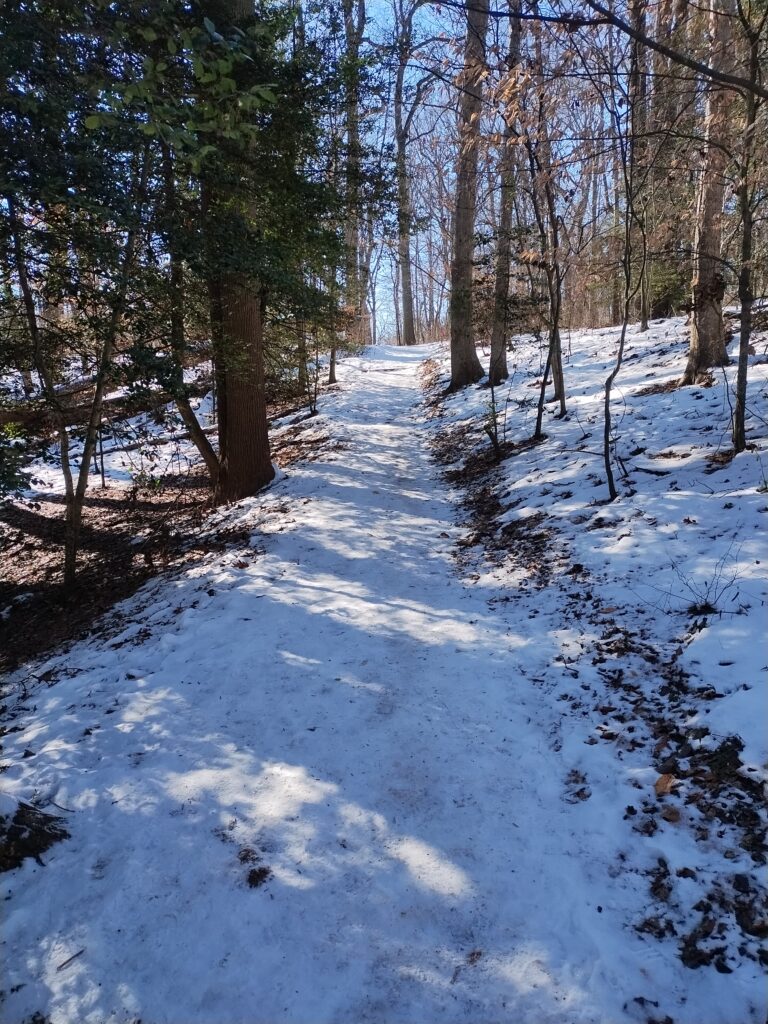
Another challenge with running hundreds is just the sheer number of decisions you need to make over the course of a run. I believe this is what leads to “ultra brain” or the inability to think clearly towards the end. A lot of times you never know what’s the correct choice until after the fact. My advice is to always pick the lower risk option. Case in point. As I’m coming in to get prepared for the night, I debated adding an extra layer up top. I finished Devil Dog last month with only 2 layers in similar overnight temperatures and was only a little cold. The lower risk option though was to add another layer, which I did. In all of the hundreds that I’ve raced, I’ve never ever been too hot overnight no matter what I’m wearing. My guess is that it would be impossible for you to overheat so add an extra layer. I was completely comfortable the rest of the race so this was 100% the correct call.
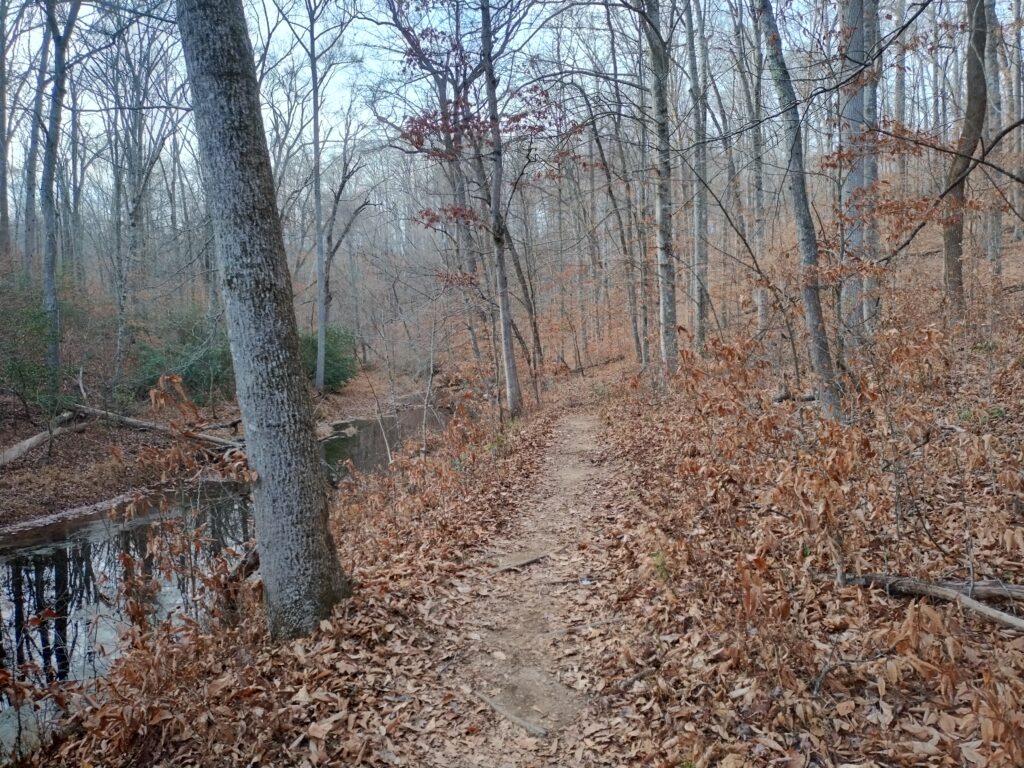
Since we’re on the topic, here are my three best strategies for staying comfortable overnight in cold temperatures:
- Hand warmers (don’t overlook simple solutions).
- Two layers on your hands. I go with a cotton glove/rain mitten combo.
- Hot bottle trick: get broth/coffee/hot chocolate close to boiling and put in a bottle. It’ll keep you warm externally until it cools enough to warm you internally. Two-fer.
When I attempted even paced hundreds last year, miles 50-60 were always where I fell off pace. I quickly made back the minute I gave up and my pace was steady in the 13:51-13:52 range. Miles 60, 65, and 70 came and went while I kept chugging along. I was waiting for that point where I needed to start pushing to keep pace, however I was still holding at the same effort level. I finished up lap 24 with my third 25 mile split of 5:52 or my fastest yet.
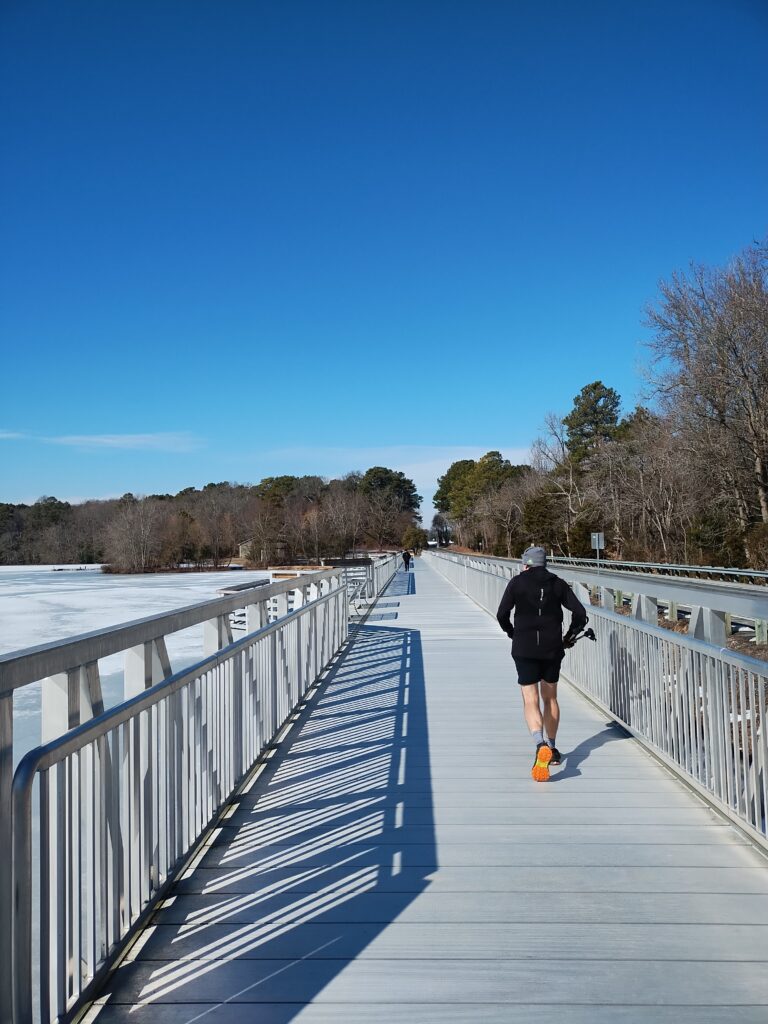
I have a known issue with keeping a steady flow of calories going down overnight in races. I was doing an amazing job ingesting 300+ calories an hour over the first half of the race, however this slowly started dropping off once it got dark. I wasn’t keeping exact count (see ultra brain above), however my guess is I was somewhere in the 100-150 calories/hour range from midnight through 5am or so. I don’t know if it’s circadian rhythms or lack of focus or what, but I just can’t keep it going. This normally translates into a slower pace, however this didn’t happen at this race. Maybe my ultra conservative early pacing allowed me to bank calories?
Slowly but surely the laps continued to tick down and my pace was right at 13:51. The final lap and a half were in daylight and I picked up the pace marginally to finish my final 8 laps in a time of 15:50. This gave me 29 minutes to run 0.8 miles. I had a feeling John was going to tell me to run 3 parking lot loops and sure enough he said I had the option of doing that or running back up the trail to the Nature Center and back. I felt a couple short loops were more in keeping with the spirit of the race so that’s what I did. Well, it also seemed like the easier option. Ha!
The ultra community has a wide range of options when it comes to hundred mile races. On one end of the spectrum you have Western States and UTMB with massive starting fields and large sponsors. On the other end, you have Angela Ivory Memorial Runs with 40 entrant limits and a stick in ground marking the start/finish line. If group runs are your thing, then this is the race for you. I know I’ll definitely be back.
